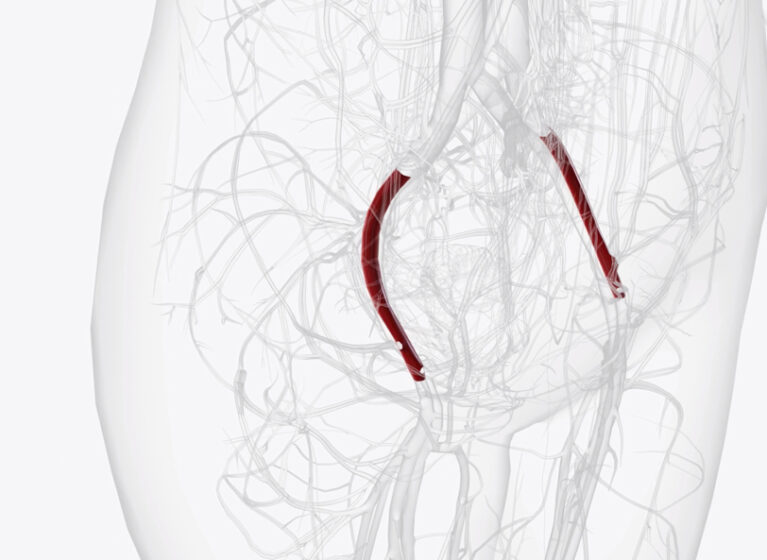
For high-performance cyclists, staying at the top of their game involves intense training and tremendous mental and physical discipline. The demands of elite competition mean even minor physical setbacks can significantly impact training and performance. So, when a vascular condition like external iliac artery endofibrosis develops, the journey from diagnosis to recovery presents a unique challenge.
Margaret Tracci, MD, JD, a vascular surgery expert at UVA Health, has been a leading figure in this ultraspecialized field. She presented important lessons learned from her experiences with these athletes and those of a handful of other experts at the 51st Annual VEITHsymposium meeting.
Ahead of the Pack
Tracci has used and studied a variety of techniques to treat external iliac artery endofibrosis, including exploring a possible role for endovascular therapy.
“The series here at UVA Health is the largest series in the United States and one of the largest series in the world,” notes Tracci about the athletes she treats. “As we go, we're learning how best to treat it, and there are questions that remain to be answered about the ideal surgical approach for different athletes, based on their anatomy, the extent of their endofibrosis, and other factors."
These lessons offer insights impacting vascular care for both athletes and nonathletes alike.
How High-Performance Cyclists Get Iliac Artery Endofibrosis
How does external iliac endofibrosis start? “It's essentially a repetitive trauma,” says Tracci.
“These folks in elite cycling do hundreds of thousands of revolutions of sharp hip flexion on the bike, with major activation of the psoas muscle. What you end up getting is thickening and narrowing of the artery, and some possible excess length that causes kinking.”
Blood Pressure Readings May Mislead
The endofibrosis creates a unique situation where, using an ankle-brachial index at rest, blood pressure through the area appears normal. As a result, it may be easy to miss this diagnosis.
But when these athletes exercise, the blood pressure in the area falls drastically. That can bring on symptoms in the affected leg and foot, like:
- Cramping
- Burning
- Numbness
- Loss of power
It also doesn’t only affect cyclists. “It was first described in cyclists, but we see that it happens in triathletes and in runners, particularly in distance runners. It's also been identified now in speed skaters, hockey players, a couple of people in rowing,” notes Tracci.
How To Treat External Iliac Artery Endofibrosis
Several surgical approaches are possible for treating endofibrosis. “It can be treated by surgically reconstructing that artery, either by patching it open or by replacing the bad segment of artery, with attention to whether there is a length problem in the artery as well that requires it to be shortened to reduce any kinking.
“Probably the most common approach is an interposition graft or a bypass of the external iliac artery. We use some of the techniques that we've gained from spine surgery to approach the vessel safely and to minimize any impact on the strength of the body wall,” says Tracci.
“We fix the artery, and we have the patient positioned so that we can flex the hip and make sure that, both extended and flexed, the graft length is right and it's not kinking in any functional position.”
What Does Recovery Look Like?
For athletes recovering from iliac endofibrosis, the current protocols involve carefully staged activity. “People are typically restricted from returning to normal daily activities for about two weeks. They're gently returning to walking, jogging, a little bit of range of motion at three to four weeks, and are strictly restricted from cycling or sharp hip flexion for six weeks,” Tracci says.
Rethinking Recovery Timelines
But these athletes often push the limits of traditional recovery advice. Their drive to return to peak condition opens the door to more personalized and data-driven recovery protocols.
Tracci highlights how their experiences challenge long-standing recovery guidelines. “We tend to be bound by habit and tradition in terms of saying things like, ‘Don’t lift anything heavy for four weeks,’ or ‘Don’t lift anything heavy for six weeks,’” she explained.
Instead, a more nuanced look at what recovery in this specific population may be warranted.
Lessons Beyond Athletics
Although these athletes present unique challenges, Tracci emphasizes that lessons from their care often inform treatments for other patients. Especially for older patients whose recovery has been limited. “How do we push back against, you know, age, immobility, infirmity, surgical recovery to take them back to being as active and safe as they can possibly be?”
By borrowing strategies from these athletes’ surgical approach and rehabilitation, Tracci hopes to also help older adults and others with chronic conditions achieve greater mobility and improved quality of life.
Innovations and the Future
When it comes to treating vascular conditions in athletes, open surgery remains the gold standard. Tracci explained, “There is no role for stenting right now, due to the extreme bending, twisting, and stretching that’s required of these arteries.”
But other techniques are also being brought to the table. Robotics may one day offer a less invasive way to treat these complex conditions while maintaining good outcomes. “There is the potential that robotics might be an option for these folks as well, going forward. “Vascular surgery is just opening up in terms of potential to do things robotically as a less invasive way to get some of these traditional operations done,” she notes.
Looking Ahead
Tracci and her team are not only helping athletes return to peak performance but also contributing to a deeper understanding of vascular conditions across all populations. “We can aim high with the athletes, but we can probably aim high with the other folks too,” she reflects.
As new technologies and techniques emerge, the lessons learned from athletes will continue to shape care for patients at every level.